The Hidden Messages Your Molars Are Sending: Understanding Molar Cupping and What It Reveals About Your Health

During routine dental examinations at Dr. Wayne Suway’s practice in Marietta, patients are often surprised when we point out small, cup-shaped indentations on their back teeth. These seemingly minor features, called molar cupping or cusp wear patterns, are actually sophisticated diagnostic clues that can reveal important information about everything from sleep disorders to jaw alignment issues. As a diplomate of the American Board of Dental Sleep Medicine, Dr. Suway understands that these subtle signs often point to larger health concerns that extend far beyond the mouth.
What Is Molar Cupping?
Molar cupping refers to the distinctive bowl-shaped or cup-like indentations that develop on the chewing surfaces of back teeth, particularly the molars and premolars. These smooth, polished depressions typically appear on the tips of the cusps—the pointed projections on the tooth’s biting surface. While some minor cupping can occur as part of normal wear over decades of use, pronounced cupping patterns often indicate abnormal forces acting on the teeth.
The cupping pattern creates a characteristic appearance where the tooth cusps develop hollowed-out areas that look remarkably similar to tiny bowls or cups. These indentations often have a smooth, shiny appearance that differs significantly from the rougher texture of normal tooth enamel, indicating prolonged grinding or clenching forces.
Understanding molar cupping requires recognizing that our teeth are designed to handle normal chewing forces during eating. However, when additional forces from grinding, clenching, or abnormal jaw movements occur—particularly during sleep—the teeth experience wear patterns that create these telltale cupping formations.
The Science Behind Cupping Formation
Tooth enamel is the hardest substance in the human body, but it’s not immune to the effects of persistent, abnormal forces. Molar cupping develops through a process called attrition, where tooth-to-tooth contact under pressure gradually wears away enamel in specific patterns.
- Normal vs. Abnormal Wear Patterns: Normal chewing creates relatively even wear across the entire chewing surface of teeth. However, when grinding and clenching occur—particularly the side-to-side grinding motions common during sleep bruxism—the forces concentrate on the cusp tips, gradually wearing them into characteristic cup shapes.
- The Role of Saliva: During sleep, saliva production decreases significantly, reducing the mouth’s natural protective lubrication. This dry environment, combined with grinding forces, accelerates the cupping process and creates the smooth, polished appearance characteristic of bruxism-related wear.
- Progressive Development: Molar cupping doesn’t happen overnight. These patterns develop gradually over months or years of repeated grinding and clenching forces. The progression allows dental professionals to estimate how long abnormal forces have been acting on the teeth.
What Molar Cupping Suggests: The Diagnostic Clues
When Dr. Suway identifies molar cupping during examinations, it serves as a valuable diagnostic indicator for several underlying conditions and behaviors that patients may not even realize they have.
- Sleep Bruxism: The most common cause of molar cupping is nocturnal bruxism—grinding or clenching teeth during sleep. Many patients are completely unaware of this nighttime activity until their dentist points out the evidence. Sleep bruxism can be 10 times more forceful than normal daytime chewing, creating the intense pressures necessary to form cupping patterns.
- Sleep-Disordered Breathing: Dr. Suway’s expertise in dental sleep medicine allows him to recognize that molar cupping often correlates with sleep-disordered breathing conditions, including sleep apnea. The body’s response to breathing interruptions during sleep can trigger grinding and clenching behaviors as part of arousal responses that help restore normal breathing.
- TMJ Disorders: Temporomandibular joint dysfunction can cause abnormal jaw movements and positioning that contribute to cupping formation. When the jaw joints don’t function properly, compensatory grinding and clenching often develop, leading to characteristic wear patterns.
- Stress and Anxiety: High stress levels frequently manifest as increased muscle tension, including the muscles of mastication. This tension can lead to both daytime and nighttime grinding behaviors that create molar cupping over time.
- Medication Side Effects: Certain medications, particularly some antidepressants and stimulants, can increase grinding and clenching behaviors as side effects. Patients may not connect their medication use with developing dental wear patterns.
The Sleep Apnea Connection: Why Dr. Suway Pays Special Attention
As a diplomate of the American Board of Dental Sleep Medicine, Dr. Suway understands the important connection between molar cupping and sleep-disordered breathing. This specialized knowledge allows him to identify patients who may benefit from sleep apnea evaluation and treatment.
- The Physiological Link: When sleep apnea episodes occur, the body’s natural response includes arousal mechanisms designed to restore normal breathing. These arousals often trigger grinding and clenching behaviors as the jaw muscles activate. Over time, this repetitive pattern creates the characteristic cupping wear on molars.
- Recognizing the Pattern: Patients with sleep apnea often exhibit specific cupping patterns that differ from those caused by simple stress-related bruxism. The systematic nature of sleep apnea-related grinding often creates more uniform cupping across multiple teeth.
- Diagnostic Importance: For many patients, molar cupping represents one of the first observable signs of sleep-disordered breathing. Since sleep apnea often goes undiagnosed for years, dental findings like cupping can prompt important medical evaluations that might otherwise be delayed.
- Treatment Connections: When molar cupping is related to sleep apnea, treating the underlying breathing disorder often significantly reduces grinding behaviors. This connection highlights the importance of comprehensive evaluation rather than simply treating the dental symptoms in isolation.
Associated Symptoms and Signs
Patients with significant molar cupping often experience other symptoms that, when viewed together, paint a comprehensive picture of their oral and overall health status.
Dental Symptoms:
- Tooth Sensitivity: worn enamel exposes more sensitive tooth layers
- Jaw Muscle Fatigue: morning jaw soreness or stiffness
- Headaches: particularly morning headaches from muscle tension
- Tooth Fractures: weakened teeth from excessive wear
- Gum Recession: excessive forces can affect gum health
Sleep-Related Symptoms:
- Morning Fatigue: despite seemingly adequate sleep time
- Witnessed Snoring: often reported by sleeping partners
- Gasping or Choking: during sleep episodes
- Frequent Awakening: without clear cause
- Daytime Sleepiness: difficulty staying alert during routine activities
General Health Indicators:
- High Blood Pressure: common with sleep apnea
- Concentration Difficulties: from poor sleep quality
- Mood Changes: irritability or depression from sleep disruption
- Weight Gain: metabolism affected by poor sleep
Diagnostic Process and Evaluation
When Dr. Suway identifies molar cupping, it triggers a comprehensive evaluation process designed to identify underlying causes and develop appropriate treatment strategies.
- Detailed History Taking: The evaluation begins with careful questioning about sleep patterns, stress levels, morning symptoms, and any awareness of grinding or clenching behaviors. Partners’ observations about snoring or sleep disruptions provide valuable additional information.
- Comprehensive Oral Examination: Beyond identifying cupping patterns, Dr. Suway examines the entire oral cavity for related signs including muscle palpation, jaw joint evaluation, and assessment of other wear patterns that might provide additional diagnostic clues.
- Sleep Study Referrals: When molar cupping patterns suggest possible sleep apnea, Dr. Suway can arrange appropriate sleep study evaluations to definitively diagnose sleep-disordered breathing conditions.
- Collaborative Care: The evaluation process often involves collaboration with medical colleagues, including sleep physicians, to ensure comprehensive assessment and treatment of any underlying conditions.
Treatment Approaches: Protecting Your Teeth and Health
Treatment for molar cupping depends on the underlying cause, but generally involves both protective measures for the teeth and addressing root causes when possible.
- Immediate Protection: Custom Night Guards: professionally fitted occlusal guards protect teeth from further grinding damage while treatment addresses underlying causes. These guards are specifically designed to accommodate each patient’s bite pattern and cupping locations.
- Sleep Apnea Treatment: Oral Appliance Therapy: Dr. Suway’s expertise in dental sleep medicine allows him to provide oral appliances that treat sleep apnea while simultaneously protecting teeth from grinding damage.
- Restorative Solutions: Tooth Restoration: severely cupped teeth may require crowns, onlays, or other restorative treatments to restore proper function and prevent further damage.
- Comprehensive Approach: Stress Management: addressing underlying stress through relaxation techniques, counseling, or lifestyle modifications can reduce grinding behaviors.
- Medication Review: evaluating current medications for side effects that might contribute to grinding behaviors.
Prevention Strategies
While some cupping may be unavoidable due to underlying medical conditions, several strategies can help minimize its development and progression.
- Sleep Hygiene: Maintaining good sleep habits can reduce the likelihood of sleep-disordered breathing and associated grinding behaviors. This includes consistent sleep schedules, comfortable sleep environments, and avoiding alcohol or sedatives before bedtime.
- Stress Management: Developing effective stress management techniques can significantly reduce daytime and nighttime grinding behaviors. This might include exercise, meditation, counseling, or other stress-reduction strategies.
- Regular Dental Monitoring: Routine dental examinations allow for early detection of cupping patterns before they become severe, enabling earlier intervention and better long-term outcomes.
- Lifestyle Modifications: Avoiding caffeine late in the day, maintaining healthy weight, and treating nasal congestion can all contribute to better sleep quality and reduced grinding behaviors.
The Importance of Professional Evaluation
- While patients might notice some symptoms of grinding or clenching, the subtle early signs of molar cupping often require professional dental evaluation to identify and interpret properly.
- Expert Assessment: Dr. Suway’s training in both general dentistry and dental sleep medicine provides the expertise necessary to distinguish between different types of wear patterns and their likely causes.
- Comprehensive Treatment Planning: Professional evaluation allows for comprehensive treatment planning that addresses both immediate dental concerns and underlying health issues that might be contributing to the problem.
- Monitoring and Adjustment: Ongoing professional monitoring ensures that treatment approaches remain effective and can be adjusted as conditions change or improve over time.
Your Health Starts with Understanding the Signs
Molar cupping might seem like a minor dental finding, but it often represents important information about your overall health and sleep quality. Dr. Suway’s expertise in both dental care and sleep medicine uniquely positions him to help patients understand these connections and develop comprehensive treatment approaches.
Don’t ignore the messages your teeth are sending about your health. Whether you’ve noticed morning jaw soreness, suspect you might grind your teeth, or have concerns about sleep quality, a comprehensive evaluation can provide valuable insights into your oral and overall health.
Take Action for Your Complete Health
If you’ve been experiencing symptoms that might be related to sleep issues or teeth grinding, or if you’re simply due for a comprehensive dental examination, contact Dr. Wayne Suway’s practice in Marietta today. Our team’s expertise in both comprehensive dental care and sleep medicine ensures that you’ll receive thorough evaluation and appropriate treatment recommendations for any issues we identify.
Don’t let molar cupping progress unchecked or ignore the potential health implications it might represent. Schedule your appointment today and discover what your teeth might be telling you about your overall health and sleep quality.
Posted on behalf of
1820 The Exchange SE, #600
Atlanta, GA 30339
Phone: (770) 953-1752
FAX: (770) 953-6470
Mon - Thu: 8:30 AM – 5:30 PMClosed for lunch: 12:30 PM - 1:30 PM









